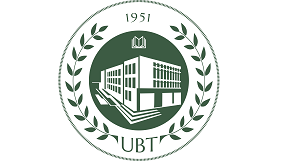YLLKA (MIJA) ÇANI, BEJO BIZHGA
PhD Candidate, Faculty of Veterinary Medicine, Agricultural University, Tirana, Albania
Faculty of Veterinary Medicine, Agricultural University, Tirana, Albania
*Corresponding author; E-mail: ylkamia@live.com
Abstract
Study focused on diagnostic alternatives of Ascaris suum infection in 162 pigs in slaughterhouse. The range and infestation intensities of Ascaris suum infection depend on age, period and method of examination. Coproscopic examinations from 162 samples showed 124 of them (76.54%) positive for Ascaris suum eggs. Coproscopic examinations resulted the most efficient and offer the possibility of epidemiological estimates. From the samples were found with injuries as a result of migration process 49 pigs or 30.24% of the sample surveyed. During the macroscopic examination of the intestine of pigs were found with the adult parasite in 78 heads or 48.14% of the examined pigs. This value was about 20% lower than the value of coproscopic examination, but about 20% higher than the value of the examination of the milk liver spots. During of the macroscopic and microscopic examination in lungs were found with signs of pneumonia and parasitic larva migration in the lung parenchyma and the bronchi, 58 heads or 35,8% of the examined pig lungs. In pigs when parasitic pneumonia detected, the nose leaks were examined for the presence and number of larvae. From 162 nose tampons examined resulted positive for the presence of Ascaris suum migration larvae 26 pigs (16.04%) from the total of examined heads. Post-mortem examinations in slaughterhouses at pigs resulted efficient, low cost and provide sufficient data for Ascaris suum infection.
Keywords: Ascariasis; swine; method; larvae; diagnose.

